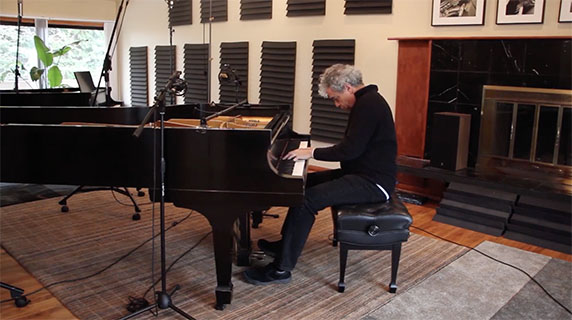

Hayden Hill
Hayden founded PianoGroove in 2015 with the goal of making the world a more musical place. He shares his love for jazz piano through his online courses and manages the community area of PianoGroove.
March 23 · 2022
Ask Question
Live Seminar Resources
Seminar Description
Seminar Description
A practice-focused workshop on passing chords. We discuss the theory, apply to jazz standards, and cover useful drills with 251s and other common progressions.
Comments
6 Comments
Leave Comment
Show All Comments






Great seminar Hayden!
A good suggestion (Not sure if a seminar or a short dedicated lesson) would be a tutorial on the use of sustain pedals for songs with a strong use of harmony and voicings, as it can be quite challenging to find that balance between a song sounding too muddy as a result of holding the pedal or sounding unintentionally staccato as a result of constantly pressing and releasing the pedal for every voicing you play.
Thanks and again, great seminar!
Thanks Jose! I’m glad you enjoyed the session.
Yes that’s a great idea for a lesson, as you say there is a balance between using the pedal tastefully, and sounding too muddy.
The midi keyboard that we use does have a sustain pedal visualisation and so it’s possible to pull that into the tutorial.
It would be cool to cover some different tunes that require different pedaling technique. I have added it to the upcoming lesson schedule.
Cheers, Hayden
Thank you so much! I’ll definitely be looking forward to it!
Great lesson Hayden, please more on the same topic.
Excellent seminar. The simple first step of adding a dominant chord a half step above is nice way to add to those gaps. Will try to add to a few standards in a few spots.
Thanks for the comment Rick and I’m glad you enjoyed the seminar.
Yes exactly, the best way to learn passing chords is though applying to jazz standards. You will learn a lot through trial and error.
The process is as follows:
(1)Identify the dominant chord a half step up from the target chord
(2)Analyse the melody note in terms of scale degrees (if applicable… sometimes there might not be a melody note to harmonise – in which case we have more freedom in terms of the passing chords we choose)
(3)Find a suitable dominant chord voicings.
This process works well with the Upper Structure Triad Cheat Sheet, download a copy here: https://www.pianogroove.com/resources/upperstructure-cheat-sheet/
Try to match the melody note to one of the tones in the 3rd column, and then invert the triad around to find the right inversion. This is a nice practice drill as we kill 2 birds with 1 stone by practicing both passing chords and USTs in the same exercise.
Another point to notice on the UST Cheat Sheet is that the only scale tones which do not contain an upper structure triad formula are the 5th, and the major 7th (the latter is unlikely over a dominant chord) and finally the natural 4th/11th (in which case a sus chord could be used). For all other possible melody tones (root, b9, 9, #9, 3, #11, #5, 13, b7) there is the option to add an upper structure triad. This is not to say that we must use UST voicings, but they are an option!
Have fun playing around with this.
Cheers, Hayden